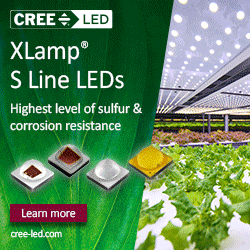How to Optimize Light Spectrums for Each Stage of Plant Growth
.jpg)
Light Spectrums for Each Stage of Plant Growth
1. Seedling Stage: A Gentle Start with Blue Light
.jpg)
2. Vegetative Stage: Powering Growth with a Blue-Red Mix
3. Flowering Stage: Boosting Yield with Red and Far-Red Light

4. Final Ripening Stage: Fine-Tuning with Adjustable Spectrums
5. Tailoring Light Spectrums to Specific Plants
Conclusion: The Art and Science of Light Spectrum Optimization
.jpg)
Mastering the art of light spectrum optimization can significantly impact the health and productivity of your indoor garden. By providing the right light at the right time, you can enhance every stage of your plant's life cycle, leading to healthier growth, bigger yields, and more energy-efficient operations.
At Iluminar Lighting, we're here to help you get the most out of your grow lights. Whether you're a seasoned grower or just starting, our team of experts is ready to guide you through optimizing your lighting setup for maximum results.
Comments (0)
This post does not have any comments. Be the first to leave a comment below.
Featured Product

